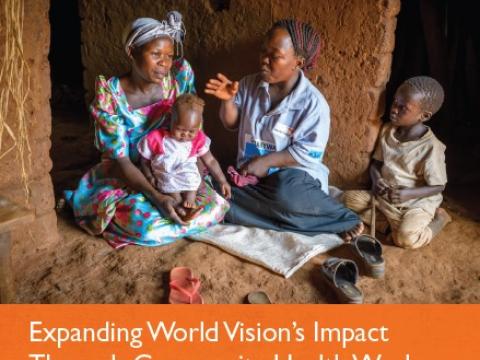Expanding World Vision's Impact Through Community Health Workers
Download
In 2015, the WVI Health and Nutrition team conducted a global census of CHW programming activities across 66 field offices to estimate the scale of our work, monitor progress on global commitments, and strengthen internal reporting. The findings have informed technical capacity statements, funding proposals, and advocacy resources that continue to guide our CHW strategy.
Learn more about World Vision's CHW Programmes.
Key findings
- Of 65 countries approached, 57 responded (an 88% response rate).
- CHW programming is a core approach for health and nutrition in 48 countries (84%).
- World Vision supports approximately 220,370 CHWs globally, more than double the original 2015 target.
- 34 of 48 countries report CHW programming in 50% or more of project sites, showing significant progress towards scale.
- 80% of participating countries had a national CHW policy in place, and World Vision CHW programmes are fully aligned in 65% of these contexts.
- World Vision directly implements CHW programming in 25% of countries, with most support provided through technical assistance and capacity building.
- 81% of offices (n=39) report implementing Timed and Targeted Counselling (TTC) or other essential newborn care approaches.
- Although World Vision has likely surpassed the 100,000 CHW target, only two countries currently include chlorhexidine cord care, highlighting the need for continued expansion of evidence-based newborn care interventions.
- 48% of offices were able to report complete CHW data through World Vision’s Horizon system, indicating a need for increased standardised global reporting.



